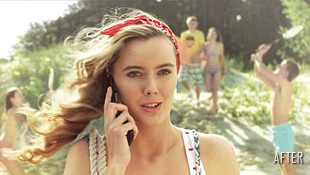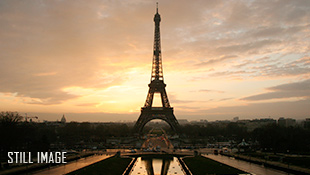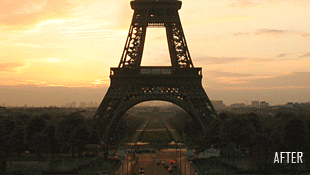
What I do – Services
Full service post-production freelancer based in Vilnius and is one of the main partners of the major advertising agencies and film production companys in Lithuania.

VFX Supervising
In the context of film and television production, a visual effects supervisor is responsible for achieving the creative aims of the director and/or producers through the use of visual effects. While it is a creative role, most supervisors possess a strong technical background and are capable of making informed decisions about the most efficient and effective technique to employ to solve the problem at hand. Often a supervisor will work in tandem with a visual effects producer and CG (computer graphics) Supervisor. Often there are several VFX supervisors on a project, although there is typically a senior VFX supervisor directing their efforts.
How it works


Color-Grading
Using digital grading, objects and color ranges within the scene can be isolated with precision and adjusted. Color tints can be manipulated and visual treatments pushed to extremes not physically possible with laboratory processing.
Fix poorly exposed shots and shots with color casts.
Create looks.
Match shots.
Master primary and secondary color correction techniques.
Use color correction to advance a story.
How it works


Compositing
Compositing is the combining of visual elements from separate sources into single images, often to create the illusion that all those elements are parts of the same scene. Live-action shooting for compositing is variously called "chroma key", "blue screen", "green screen" and other names. Sometimes you need use rotoscoping.


Matte Painting
A matte painting is a painted representation of a landscape, set, or distant location that allows filmmakers to create the illusion of an environment that would otherwise be too expensive or impossible to build or visit. Historically, matte painters and film technicians have used various techniques to combine a matte-painted image with live-action footage. At its best, depending on the skill levels of the artists and technicians, the effect is "seamless" and creates environments that would otherwise be impossible to film
How it works


Match Moving
In cinematography, match moving is a cinematic technique that allows the insertion of computer graphics into live-action footage with correct position, scale, orientation, and motion relative to the photographed objects in the shot.


Keying
This is one of the most famous techniques used in films; it involves the removal of a color in order to add backgrounds that are entirely constructed using computer-generated imagery.


Rotoscoping
Rotoscoping is an animation technique in which animators trace over footage, frame by frame, for use in live-action and animated films. In the visual effects industry, the term rotoscoping refers to the technique of manually creating a matte for an element on a live-action plate so it may be composited over another background.


Camera mapping
Camera Projection Mapping is the process of projecting an image onto simple geometry creating the illusion of detail and movement from what is really just a still image. This method has been used by many matte painters in the film and television industries.

Motion Graphics
Motion Design is a subset of graphic design in that it uses graphic design principles in a filmmaking or video production context (or other temporally evolving visual medium) through the use of animation or filmic techniques. Examples include the kinetic typography and graphics you see as the titles for a film, or opening sequences for television or the spinning, web-based animations, three-dimensional station identification logo for a television channel.
How it works

CG animation
Computer animation encompasses a variety of techniques, the unifying factor being that the animation is created digitally on a computer. This animation takes less time than previous traditional animation.
2D animation figures are created and/or edited on the computer using 2D bitmap graphics or created and edited using 2D vector graphics. This includes automated computerized versions of traditional animation techniques such as of, interpolated morphing, onion skinning and interpolated rotoscoping.
A 3D animation is digitally modeled and manipulated by an animator. The animator starts by creating an external mesh to manipulate, a mesh is a geometric configuration that gives the visual appearance of form to an 3D object or 3D environment, it is given an internal digital skeletal structure that can be used to control the mesh. This process is called rigging and can be programmed with movement.
